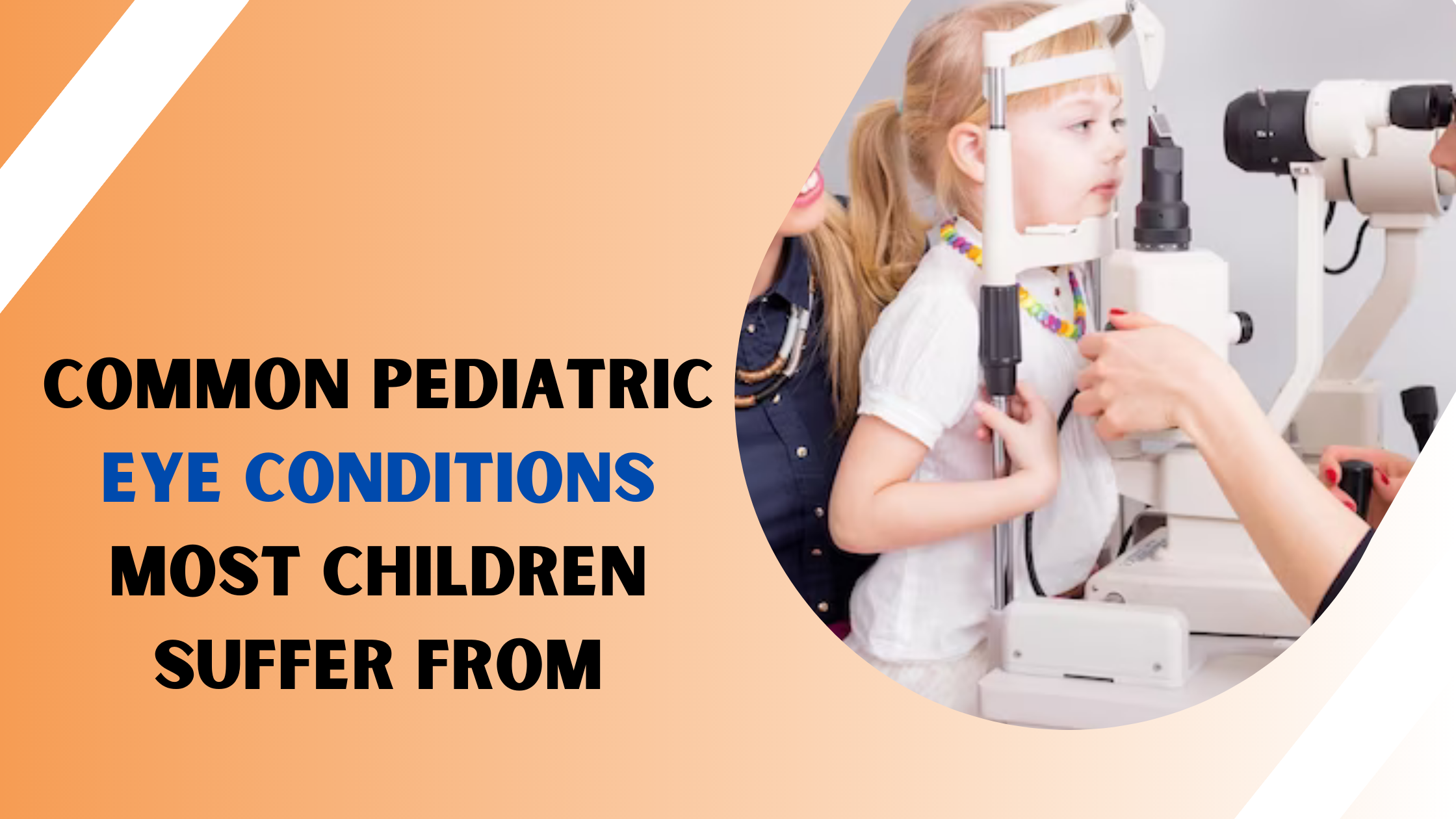Children’s eye health is a critical aspect of their overall well-being. It is essential for parents and caregivers to be aware of common paediatric eye conditions that children may encounter during their early years. Identifying and addressing these issues early can significantly impact a child’s quality of life and prevent potential long-term complications.
In this informative blog, we will discuss some of the most prevalent paediatric eye conditions, their symptoms, causes, and potential treatment options. Remember, early detection and prompt intervention are key to ensuring your child’s vision remains healthy and uncompromised.
Amblyopia (Lazy Eye)
Amblyopia, or “lazy eye,” is one of the most prevalent paediatric eye conditions. It occurs when one eye has better visual acuity than the other due to the brain favouring the stronger eye and suppressing the weaker one. Amblyopia often develops during early childhood and can cause to permanent vision impairment if not treated promptly. If you suspect your child is facing any kind of eye issue, immediately consult with an optometrist and go for paediatric eye exams for the diagnosis and proper treatment.
Symptoms: Children with amblyopia may experience reduced depth perception, poor visual acuity in one eye, and difficulty in focusing.
Causes: Amblyopia can be caused by various factors, including strabismus (misaligned eyes), significant refractive errors (nearsightedness, farsightedness, astigmatism), or a combination of both.
Treatment: The primary treatment for amblyopia involves patching the stronger eye to force the weaker eye to work harder and improve its visual acuity. Correcting any refractive errors and addressing strabismus may also be necessary.
Strabismus (Crossed Eyes)
Strabismus is a condition in which the eyes are misaligned and do not move together in a coordinated manner. It can be evident from birth or develop during early childhood.
Symptoms: The most apparent sign of strabismus is the misalignment of one or both eyes, which may turn inward, outward, upward, or downward.
Causes: Strabismus can result from issues with the eye muscles or the nerves controlling them. It may also be associated with refractive errors or other underlying eye conditions.
Treatment: Treatment for strabismus includes kids’ glasses, eye exercises, and, in some cases, surgery to realign the eyes and improve binocular vision.
Conjunctivitis (Pink Eye)
Conjunctivitis, commonly referred to as pink eye, is an inflammation of the conjunctiva (the thin, transparent layer covering the white part of the eye and the inner surface of the eyelids). It can be highly contagious and is often seen in daycare settings or schools.
Symptoms: Pink or red discoloration of the eye, eye discharge, itching, and tearing are common symptoms of conjunctivitis.
Causes: Pink eye can be caused by viruses, bacteria, allergies, or irritants like smoke or chemicals.
Treatment: Treatment depends on the cause of conjunctivitis. Viral pink eye typically resolves on its own, while bacterial conjunctivitis may require antibiotic eye drops.
Refractive Errors
Refractive errors are common in children and occur when the shape of the eye prevents light from focusing directly on the retina. The three primary types of refractive errors are myopia (nearsightedness), hyperopia (farsightedness), and astigmatism.
Symptoms: Children with refractive errors may experience blurry vision, eye strain, headaches, and squinting.
Causes: Refractive errors can be genetic or develop as the eyes grow and change shape during childhood.
Treatment: Prescription eyeglasses or contact lenses are one of the best ways for Myopia control. Prescription eyeglasses or contact lenses are typically used to correct all refractive errors and provide clear vision.
Blocked Tear Ducts
Blocked tear ducts are common in children and occur when the tear drainage system doesn’t fully develop, leading to tears pooling in the eyes.
Symptoms: Excessive tearing, discharge from the eye, and crusting around the eyes are common signs of blocked tear ducts.
Causes: Blocked tear ducts are often congenital and may resolve on their own as the child grows. However, some cases may require intervention.
Treatment: Massaging the tear duct area, applying warm compresses, and keeping the eyes clean can help open the ducts. In persistent cases, a doctor may perform a simple procedure to open the blocked tear duct.
Wrapping It Up
Paediatric eye conditions can significantly impact a child’s visual development and overall well-being. Early detection, timely intervention, and regular eye check-ups are essential for maintaining optimal eye health in children. As a parent or caregiver, being vigilant about your child’s eye health and promptly addressing any concerns can make a significant difference in their vision and overall quality of life.
If you notice any signs or symptoms of eye problems in your child, consult a paediatric optometrist for a comprehensive eye examination and appropriate treatment. Salisbury Optometrist is one of the leading eyecare specialists providing affordable eye care treatment options. You can come to us to diagnose any eye issue and get appropriate treatment.

